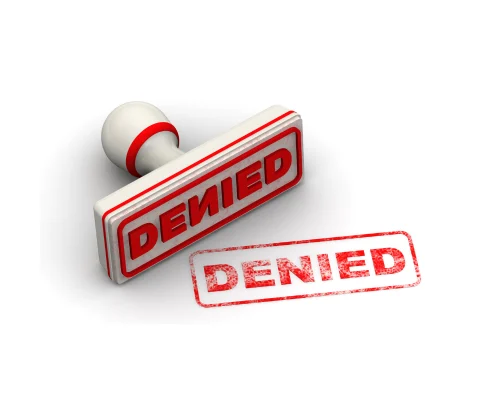Why Would a Workers’ Compensation Claim Be Denied? Understanding Denials and Navigating Recovery in Hawaii

Nestled in the embrace of Hawaii’s emerald valleys and kissed by the Pacific’s whispering waves, the Aloha State offers a serene backdrop for healing and renewal. Yet, for those navigating the aftermath of a workplace injury, the path to recovery can feel like a trek through dense rainforest—beautiful but fraught with obstacles. At our pain clinic in Hawaii, we witness the resilience of injured workers as they seek relief and restoration. A critical lifeline for many is workers’ compensation, a system designed to provide medical care and financial support. However, the disheartening reality is that not all claims sail smoothly; some are denied, leaving claimants adrift. Understanding why a workers’ compensation claim might be denied is essential for charting the course ahead. In this comprehensive guide, we explore the common reasons for claim denials in Hawaii, offer insights on avoiding pitfalls, and illuminate how our pain clinic can guide you toward recovery, blending clinical expertise with the nurturing spirit of the islands. The Workers’ Compensation Landscape in Hawaii Hawaii’s workers’ compensation system, governed by Chapter 386 of the Hawaii Revised Statutes, is a beacon of support for employees injured on the job. Like the steady trade winds, it’s designed to carry workers through medical treatment, wage replacement, and rehabilitation without the burden of proving employer fault. The law presumes injuries are work-related, placing the onus on employers to disprove compensability. Yet, despite this protective framework, denials can cast shadows over the process, much like clouds over Mauna Kea’s slopes.At our pain clinic, we’ve seen how a denied claim can amplify physical and emotional pain, turning recovery into a daunting climb. By understanding the reasons behind denials, you can better navigate the system and access the care you deserve. Let’s delve into the primary reasons a workers’ compensation claim might be denied in Hawaii and how to respond with the grace and strength of a native koa tree.Even if your claim has been denied, we can help https://vallymdhawaii.com/contact Common Reasons for Workers’ Compensation Claim Denials 1. The Injury Is Not Work-Related The cornerstone of a workers’ compensation claim is that the injury must arise out of and in the course of employment. If the employer or insurer believes the injury occurred outside the workplace or during non-work activities, the claim may be denied. For example, an office worker in Honolulu who slips on a wet floor at a restaurant during lunch might face a denial if the insurer argues the incident wasn’t job-related.Why It Happens: Insurers scrutinize the circumstances of the injury. If evidence suggests the injury occurred off-site or during personal time, they may challenge its compensability. In Hawaii, the presumption of compensability helps, but employers can rebut it with substantial evidence, such as witness statements or video footage.How to Avoid: Document the injury’s connection to work. If you’re injured on a break but on company property, note the location and context. Report the incident immediately to your supervisor, ideally in writing, to establish a clear timeline. At our clinic, we often see patients whose claims falter due to vague reporting—clarity is your ally. 2. Late or Improper Reporting Hawaii law requires employees to notify their employer of a work-related injury promptly, ideally immediately, either orally or in writing. Failure to report within a reasonable timeframe can lead to a denial. Additionally, if the employer doesn’t file the WC-1 (“Employer’s Report of Industrial Injury”) within seven working days, or if the employee needs to file a WC-5 (“Employee’s Claim for Workers’ Compensation Benefits”), errors or delays in paperwork can jeopardize the claim.Why It Happens: Delays in reporting can raise suspicions about the injury’s legitimacy. For instance, waiting weeks to report a back injury from lifting boxes in a Hilo warehouse might lead the insurer to question whether the injury occurred at work or elsewhere.How to Avoid: Act swiftly. Notify your employer the same day or as soon as possible, and request written confirmation of your report. Keep copies of all correspondence. If you suspect the employer hasn’t filed the WC-1, contact the Disability Compensation Division (DCD) to file a WC-5. Our pain clinic advises patients to maintain a journal of their injury timeline, much like a sailor’s log, to anchor their claim. 3. Pre-Existing Conditions Injuries complicated by pre-existing conditions—like arthritis or prior back pain—can lead to denials if the insurer argues the current condition isn’t work-related. For example, a construction worker in Kailua with a history of knee issues might have their claim denied if the insurer claims their pain stems from an old injury rather than a recent fall on-site.Why It Happens: Insurers may use medical records to assert that the injury predates the workplace incident. However, Hawaii law allows compensation if a work injury aggravates a pre-existing condition, provided the aggravation is documented.How to Avoid: Be transparent with your healthcare provider about your medical history and the work incident. At our clinic, we conduct thorough assessments to distinguish work-related aggravations from pre-existing issues, providing detailed reports to support your claim. Prompt medical evaluation after the injury strengthens your case. 4. Failure to Seek Timely Medical Care Hawaii’s workers’ compensation system requires injured workers to seek medical treatment promptly. Delaying a doctor’s visit can lead to a denial, as insurers may argue the injury wasn’t severe or work-related. Additionally, choosing a physician not approved by the employer’s insurer or failing to follow treatment plans can complicate claims.Why It Happens: Insurers view delayed treatment as evidence the injury isn’t serious or occurred elsewhere. For instance, a Maui hotel worker who waits a month to see a doctor for shoulder pain might face skepticism about the injury’s origin.How to Avoid: Visit a doctor immediately after the injury, even for seemingly minor issues. In Hawaii, you can choose your attending physician, but inform the insurer of your choice. Follow prescribed treatments diligently. Our pain clinic offers same-day appointments to ensure timely care, blending advanced diagnostics with holistic therapies inspired by Hawaii’s healing traditions. 5. Disputes Over Injury Severity or Disability
Can You File a Workers’ Compensation Claim After Being Fired? A Comprehensive Guide

Losing a job is stressful enough, but if you’ve been injured on the job and then fired, you might be wondering whether you can still file a workers’ compensation claim. The good news is that, in most cases, being fired does not automatically disqualify you from pursuing a workers’ compensation claim, provided the injury occurred while you were employed and was work-related. However, the process can be complex, and there are important considerations to keep in mind. In this comprehensive guide, we’ll explore whether you can file a workers’ compensation claim after being fired, the factors that may affect your claim, and a step-by-step process for filing. By the end, you’ll have a clear understanding of your rights and how to protect them. Understanding Workers’ Compensation: The Basics Workers’ compensation is a state-mandated insurance program designed to provide financial and medical benefits to employees who suffer work-related injuries or illnesses. These benefits typically include: Medical expenses: Coverage for doctor visits, hospital stays, medications, surgeries, and rehabilitation. Wage replacement: Partial compensation for lost wages due to temporary or permanent disability. Disability benefits: Payments for temporary or permanent disabilities caused by the injury. Vocational rehabilitation: Assistance with retraining or finding new employment if you can’t return to your previous job. Workers’ compensation operates on a no-fault basis, meaning you don’t need to prove your employer was negligent to receive benefits. However, the injury must have occurred during the course of your employment, and you must follow specific procedures to file a claim. Visit this link to access the forms needed to file your claim: https://www.cfins.com/claims-solutions/property-casualty-insurance-claims/workers-compensation-claims/claim-kit-hawaii/ Can You File a Workers’ Compensation Claim After Being Fired? The short answer is yes, you can typically file a workers’ compensation claim after being fired, as long as the injury occurred while you were employed and was related to your job duties. Your employment status at the time of filing—whether you’re still employed, fired, or quit—does not generally affect your eligibility for workers’ compensation benefits. However, there are nuances and potential challenges to consider.Key Factors That Affect Your Claim Timing of the Injury: The injury must have occurred while you were employed and performing job-related duties. For example, if you were injured on the job but didn’t report it until after being fired, you can still file a claim, but you’ll need to prove the injury was work-related and occurred during your employment. If the injury occurred after your termination (e.g., due to unsafe conditions discovered later), you likely won’t qualify for workers’ compensation, as the injury didn’t happen during your employment. Reason for Termination: In most states, the reason for your termination doesn’t impact your right to file a workers’ compensation claim. Whether you were fired for poor performance, downsizing, or misconduct, you’re generally still entitled to benefits for a work-related injury. However, if your employer claims you were fired for fraudulent behavior related to the injury (e.g., faking the injury), they may contest your claim. You’ll need strong evidence, such as medical records or witness statements, to support your case. Retaliation Concerns: If you suspect you were fired because you reported a work-related injury or attempted to file a workers’ compensation claim, this could be considered retaliation, which is illegal in most states. Retaliation may entitle you to additional legal remedies, such as reinstatement, back pay, or damages. Consult an attorney if you believe your termination was retaliatory. State-Specific Laws: Workers’ compensation laws vary by state, including deadlines for reporting injuries and filing claims. Some states have strict time limits (e.g., 30 days to report an injury), while others allow claims to be filed months or even years after the injury, provided you can prove it was work-related. Check your state’s workers’ compensation board or department of labor website for specific rules. Employer Disputes: Employers or their insurance carriers may challenge your claim, especially if you file after being fired. They might argue that the injury wasn’t work-related, occurred after termination, or isn’t as severe as claimed. Be prepared to provide documentation, such as medical records, incident reports, and witness testimonies. Challenges of Filing a Claim After Termination Filing a workers’ compensation claim after being fired can present unique challenges: Lack of Communication with Employer: If you’re no longer employed, coordinating with your former employer to report the injury or obtain necessary paperwork can be difficult. Employers may be unresponsive or uncooperative. Proving the Injury: Without immediate reporting, it may be harder to prove the injury occurred on the job. Delayed reporting can raise suspicion, so gather as much evidence as possible, such as medical records or coworker statements. Employer Pushback: Some employers may argue that you’re filing a claim out of spite or to retaliate for being fired. This can complicate the claims process, especially if the employer disputes the injury’s legitimacy. Access to Benefits: If you’re no longer employed, you may face delays in receiving wage replacement or medical benefits, as the employer’s insurance company may scrutinize the claim more closely. Despite these challenges, your right to workers’ compensation benefits remains intact if you meet the eligibility criteria. The key is to act promptly, document everything, and seek legal advice if needed. How to File a Workers’ Compensation Claim After Being Fired If you’ve been fired and want to file a workers’ compensation claim, follow these steps to maximize your chances of success: Step 1: Report the Injury to Your Former Employer Notify in Writing: Even if you’re no longer employed, you must inform your former employer about the injury as soon as possible. Send a written notice (via certified mail or email with a read receipt) to document the communication. Include Details: Provide specifics about the injury, including the date, time, location, and circumstances of the incident. Mention any witnesses who can corroborate your account. Check Deadlines: Each state has a deadline for reporting workplace injuries, often ranging from 7 to 30 days. Missing this deadline could jeopardize your claim. Step 2: Seek Medical Attention Visit a Doctor: Get medical
Top Pain Relief Options for Workplace Injuries in Hawaii

Workplace injuries can happen in an instant, but the pain they cause can linger for months or even years. Whether you’re a fisherman in Hilo, a resort worker in Kona, or a store clerk in Lihue, dealing with pain from a work-related injury is a challenge no one should face alone. In Hawaii, where vibrant industries like tourism, agriculture, and construction thrive, workplace injuries are all too common, and finding effective pain relief is critical to getting back to your life. At Vally Medical Group, with clinics in Kona, Hilo, and Lihue, we specialize in helping Hawaii’s workforce recover from workplace injuries with cutting-edge pain relief options tailored to your needs.In this blog post, we’ll explore the top pain relief options for workplace injuries in Hawaii, from non-invasive therapies to advanced medical interventions. Whether you’re managing chronic back pain from lifting crates or nerve pain from repetitive tasks, we’ll guide you through the best solutions available at our Hawaii pain clinics. Let’s dive into how you can find relief and reclaim your aloha spirit. For more information regarding workers’ comp coverage in Hawaii, please visit this link: https://labor.hawaii.gov/dcd/home/aboutwc/ Understanding Workplace Injuries and Pain in Hawaii Workplace injuries in Hawaii range from sudden accidents, like a fall on a slippery Kona hotel floor, to gradual conditions, like carpal tunnel syndrome from typing in a Lihue office. Common injuries include: Strains and sprains: From lifting heavy loads in Hilo’s warehouses. Fractures: From construction site mishaps in Kona. Repetitive stress injuries: From long hours of manual work in Lihue’s retail sector. Chronic pain syndromes: Like sciatica or joint pain triggered by workplace tasks. These injuries often lead to acute or chronic pain, impacting your ability to work, surf, or enjoy Hawaii’s beauty. The good news? Modern pain relief options for workplace injuries in Hawaii can help you heal faster and feel better. At Vally Medical Group, we combine compassion with expertise to create personalized treatment plans for workers’ comp injuries and beyond. Visit this link for more information on repetitive motion injuries: https://my.clevelandclinic.org/health/diseases/17424-repetitive-strain-injury 1. Physical Therapy for Strength and Mobility Physical therapy (PT) is a cornerstone of pain relief for workplace injuries in Hawaii, helping you regain strength, flexibility, and function without surgery. PT is ideal for injuries like muscle strains, ligament tears, or post-fracture recovery. How It Works: A licensed physical therapist designs exercises to target your injury. For example, if you’re a landscaper in Kona with shoulder pain from repetitive pruning, PT might include stretches and resistance training to rebuild muscle. Benefits: Reduces pain, improves mobility, and prevents re-injury. At Vally Medical Group: Our clinics in Kona, Hilo, and Lihue offer tailored PT programs, often covered by workers’ comp for workplace injuries. We use techniques like manual therapy and aquatic therapy to accelerate recovery. Why Choose PT? It’s non-invasive, empowers you to take charge of your healing, and pairs well with other treatments for lasting relief. 2. Epidural Steroid Injections for Targeted Pain Relief For workplace injuries causing intense back, neck, or leg pain, epidural steroid injections (ESIs) can be a game-changer. These are especially effective for conditions like herniated discs or sciatica, common among Hilo dock workers lifting heavy cargo. How It Works: A pain specialist injects a corticosteroid and anesthetic into the epidural space near your spine, reducing inflammation and numbing pain. The procedure takes minutes and is done under imaging guidance for precision. Benefits: Provides relief for weeks or months, allowing you to engage in physical therapy or return to work. At Vally Medical Group: Our Hawaii pain clinics in Kona, Hilo, and Lihue offer ESIs performed by board-certified physicians, with detailed documentation for workers’ comp claims. Good to Know: ESIs aren’t a cure, but they can break the pain cycle, giving your body time to heal. They’re often covered for workplace injuries in Hawaii, making them accessible for many. Visit this link for more information about injection therapy: https://vallymdhawaii.com/injection-therapy/ 3. Hyperbaric Oxygen Therapy for Tissue Healing Hyperbaric oxygen therapy (HBOT) is an innovative pain relief option for workplace injuries in Hawaii, particularly for soft tissue damage or slow-healing wounds. It’s gaining popularity among injured workers, like Lihue construction workers with crush injuries. How It Works: You relax in a pressurized chamber breathing pure oxygen, which boosts oxygen levels in your blood. This promotes tissue repair, reduces swelling, and eases pain. Benefits: Speeds healing, reduces chronic pain, and supports recovery from sprains, burns, or fractures. At Vally Medical Group: Our Kona and Hilo clinics offer state-of-the-art HBOT chambers, with Lihue patients able to access referrals. We work with workers’ comp insurers to cover this therapy when medically necessary. Why HBOT? It’s non-invasive, drug-free, and can enhance other treatments, making it ideal for complex workplace injuries. Visit this link for more information about hyperbaric therapy: https://vallymdhawaii.com/hyperbaric-therapy/ 4. Nerve Blocks for Pinpoint Pain Management Nerve blocks are a powerful tool for managing pain from workplace injuries, especially when pain radiates from nerves, like in carpal tunnel syndrome or pinched nerves. These are common among Kona hotel staff performing repetitive tasks. How It Works: A pain specialist injects an anesthetic or anti-inflammatory medication near a specific nerve or nerve group to block pain signals. For example, a medial branch block can help a Hilo truck driver with facet joint pain. Benefits: Offers immediate relief, often lasting weeks, and can be diagnostic (helping identify pain sources). At Vally Medical Group: Our Hawaii pain clinics in Kona, Hilo, and Lihue provide nerve blocks with ultrasound or fluoroscopy guidance, ensuring safety and accuracy. Pro Tip: Nerve blocks can reduce reliance on oral pain medications, which is a plus for long-term health and workers’ comp cases. 5. Spinal Cord Stimulation for Chronic Pain For severe, chronic pain from workplace injuries that doesn’t respond to other treatments, spinal cord stimulation (SCS) is a cutting-edge option. It’s suited for conditions like failed back surgery syndrome or neuropathic pain, seen in Lihue warehouse workers with repeated lifting injuries. How It Works: A small device is implanted under your skin, sending electrical
How to File a Workers’ Comp Claim for Chronic Pain in Hawaii

Chronic pain from a workplace injury can turn your daily life upside down, especially in a dynamic place like Hawaii. Whether you’re a barista in Kona, a dock worker in Hilo, or a retail employee in Lihue, persistent pain from a work-related incident can make even simple tasks feel impossible. If you’re wondering how to file a workers’ comp claim for chronic pain in Hawaii, you’ve come to the right place. At Vally Medical Group, we’ve guided countless Hawaii residents through the workers’ compensation process while helping them manage chronic pain. With our clinics in Kona, Hilo, and Lihue, we’re here to make the journey smoother for you.In this blog post, we’ll walk you through the steps to file a workers’ compensation claim for chronic pain in Hawaii. From reporting your injury to gathering medical evidence and avoiding common mistakes, we’ll equip you with the knowledge to secure the benefits you deserve. Let’s get started so you can focus on healing and rediscovering the joy of life in the Aloha State. Understanding Workers’ Compensation in Hawaii First, let’s cover the basics. Workers’ compensation in Hawaii is a state-required insurance program that supports employees injured or made ill by their jobs. It covers medical bills, lost wages, and rehabilitation costs, including for chronic pain caused by workplace injuries. Whether you’re dealing with shoulder pain from stocking shelves in Lihue or back pain from construction work in Kona, workers’ comp is designed to help.The challenge with chronic pain claims is proving the pain is work-related, as it often develops gradually. With proper documentation and medical support from a Hawaii pain clinic like Vally Medical Group, you can build a compelling case. Here’s how to navigate the process step by step. Step 1: Notify Your Employer Promptly The first step in filing a workers’ comp claim for chronic pain in Hawaii is to report your injury to your employer as soon as possible. Hawaii law gives you 90 days from the injury or when you first notice symptoms to inform your employer. For chronic pain, this might be when you realize your discomfort isn’t fading—say, after months of knee pain from standing all day at a Hilo fish market.When you report, be clear about how the injury occurred and its impact. For example, if you’re a landscaper in Kona with wrist pain from repetitive trimming, describe the tasks that led to it. Put the report in writing (via email or letter) and keep a copy. This documentation is crucial for your claim.Tip: Don’t wait, thinking the pain might resolve on its own. Chronic pain can worsen, and delayed reporting may weaken your case. Step 2: Seek Medical Care Right Away After reporting your injury, visit a doctor immediately. In Hawaii, workers’ comp lets you choose your initial physician, which is a big advantage. Seeing a chronic pain specialist at a Hawaii pain clinic, like Vally Medical Group in Kona, Hilo, or Lihue, can ensure an accurate diagnosis and a clear link to your workplace injury.During your appointment, explain your symptoms thoroughly—where the pain is, how severe it feels, and how it affects your life. For instance, if you’re a hotel worker in Lihue with neck pain from lifting luggage, note how it limits your movement. Your doctor may diagnose conditions like: Sciatica from repetitive bending Tendinitis from frequent tool use Chronic joint pain from a traumatic injury These medical records are vital for your workers’ comp claim for chronic pain in Hawaii, as they tie your condition to your job.Why a Pain Clinic? At Vally Medical Group, we specialize in workers’ comp injuries and chronic pain treatment in Hawaii. Our advanced options, like nerve blocks and hyperbaric oxygen therapy, help you heal while we provide detailed documentation to support your claim. Step 3: Submit the Workers’ Comp Claim Once you’ve seen a doctor, your employer should file a WC-1 form (Employer’s Report of Industrial Injury) with their workers’ comp insurer and the Hawaii Department of Labor and Industrial Relations (DLIR) within seven working days of your report. Don’t leave it entirely to them—stay proactive to ensure the process moves forward.If your claim is denied or disputed, you may need to file a WC-5 form (Employee’s Claim for Workers’ Compensation Benefits) to formally request benefits. Include specifics like: When and how the injury happened How chronic pain affects your work Medical diagnoses and recommended treatments Send the WC-5 to the DLIR’s Disability Compensation Division (DCD) online or by mail, and keep copies of all documents. Disputes are common with chronic pain claims, so preparation is key. Commonly asked questions can be found here: Step 4: Collect Strong Medical Evidence Chronic pain isn’t always visible on scans, making it harder to prove to insurers. Solid medical evidence is essential to show your pain is work-related. Here’s how to build a strong case: Detailed Doctor’s Notes: Ask your physician to document how your chronic pain connects to your job. For example, if you’re a delivery driver in Hilo with elbow pain from heavy lifting, your doctor should explain the cause. Diagnostic Tests: Request MRIs, X-rays, or EMG tests to identify underlying issues. At Vally Medical Group, we use cutting-edge diagnostics to support workers’ comp claims in Hawaii. Treatment Records: Log all treatments, like physical therapy or injections. This shows you’re addressing the pain, which insurers value. Second Opinions: If the insurer challenges your claim, a second evaluation from another Hawaii pain clinic can reinforce your case. Stay consistent with appointments and treatments to avoid gaps that could undermine your claim. Treatment plan legal guidelines can be found here: Step 5: Know Your Benefits If your workers’ comp claim for chronic pain in Hawaii is approved, you may qualify for several benefits: Medical Coverage: Pays for doctor visits, pain clinic treatments, medications, and procedures. For instance, spinal cord stimulation at Vally Medical Group could be covered if medically necessary. Temporary Disability: Replaces part of your income if pain keeps you from working. Hawaii pays two-thirds of your average weekly

